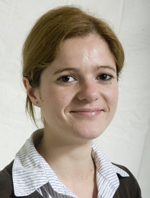AUSTOUGH
Austenite reconstruction tool for low-temperature toughness control in heavy gauge steels
Financed by

Número de expediente: RFSR-CT-2013-00012
Programa: RFCS
Partners
-
ONDERZOEKSCENTRUM VOOR AANWENDING VAN STAAL N.V. BELGIQUE
-
Ceit ESPAÑA
-
CENTRO SVILUPPO MATERIALI SPA ITALIA
-
SALZGITTER MANNESMANN FORSCHUNG GmbH DEUTSCHLAND
-
UNIVERSITEIT GENT BELGIQUE
Summary
Although heavy gauge plates and coils are already produced at industrial scale, the market driven industrial development is now focussed on high thickness products with higher strength and high toughness. One of the current processing routes for these high thickness grades is the TMCP route, which critically depends on the austenite conditioning during hot forming at specific temperature in relation to the aimed metallurgical mechanisms (recrystallization, strain accumulation).
There is, however, the limitation regarding the quantification of such mechanisms when industrial processes are considered. Currently, all the knowledge on the metallurgical evolution of the austenite is based on modelling and empirical simulations of the industrial process that hardly consider the gradient of temperature on the thickness to derive the austenite status. Moreover, most of the models consider homogeneous microstructures ahead of the phase transformation. The intention of this project is to develop a technique that allows direct observation of high-temperature austenite structures on industrially processed heavy gauge plates and coils. It is expected that such a tool will allow the fine tuning of the current TMCP parameters for plate and coil processing, pushing further the strength and toughness limits currently obtained, i.e. developing higher grades with improved toughness in higher thinness.
The selected approach is (i) first to develop a high temperature phase reconstruction tool, (ii) validate the reliability of this tool on homogeneous reference specimens and (iii) apply this tool on hot rolled plates in order to extract accurate quantitative data on the parent phase microstructure including its spatial heterogeneity and (iv) apply the newly acquired information to optimally design the hot rolling process to the purpose of improving the (low-temperature) fracture toughness of the finished product.
Ceit's role in the project
The role of Ceit in this project is focused on:
-
Characterization of the hot-working behaviour of the low carbon Nb-Ti microalloyed steels used in the project through torsion and plane strain compression. Microstructural characterization of the specimens generated using conventional microscopy techniques (optical microscopy) and more advanced characterization techniques (FEG-SEM, EBSD, TEM).
-
Validation of the available microstructural evolution models for the project steels using data collected from the hot deformation tests for their final application in models which consider through-thickness temperature and strain gradients.
-
Characterization of the mechanical properties of samples processed through plane strain compression using different processing parameters (finishing deformation and coiling temperature) through tensile and Charpy tests. Quantification of the different contributions of the microstructure to the mechanical properties using available models.
-
Generation of samples from low carbon steels and Fe-30Ni alloy for validation of the reconstruction procedures available for the different partners and characterization through EBSD. Application of an in-house developed model for Round Robin comparison.

